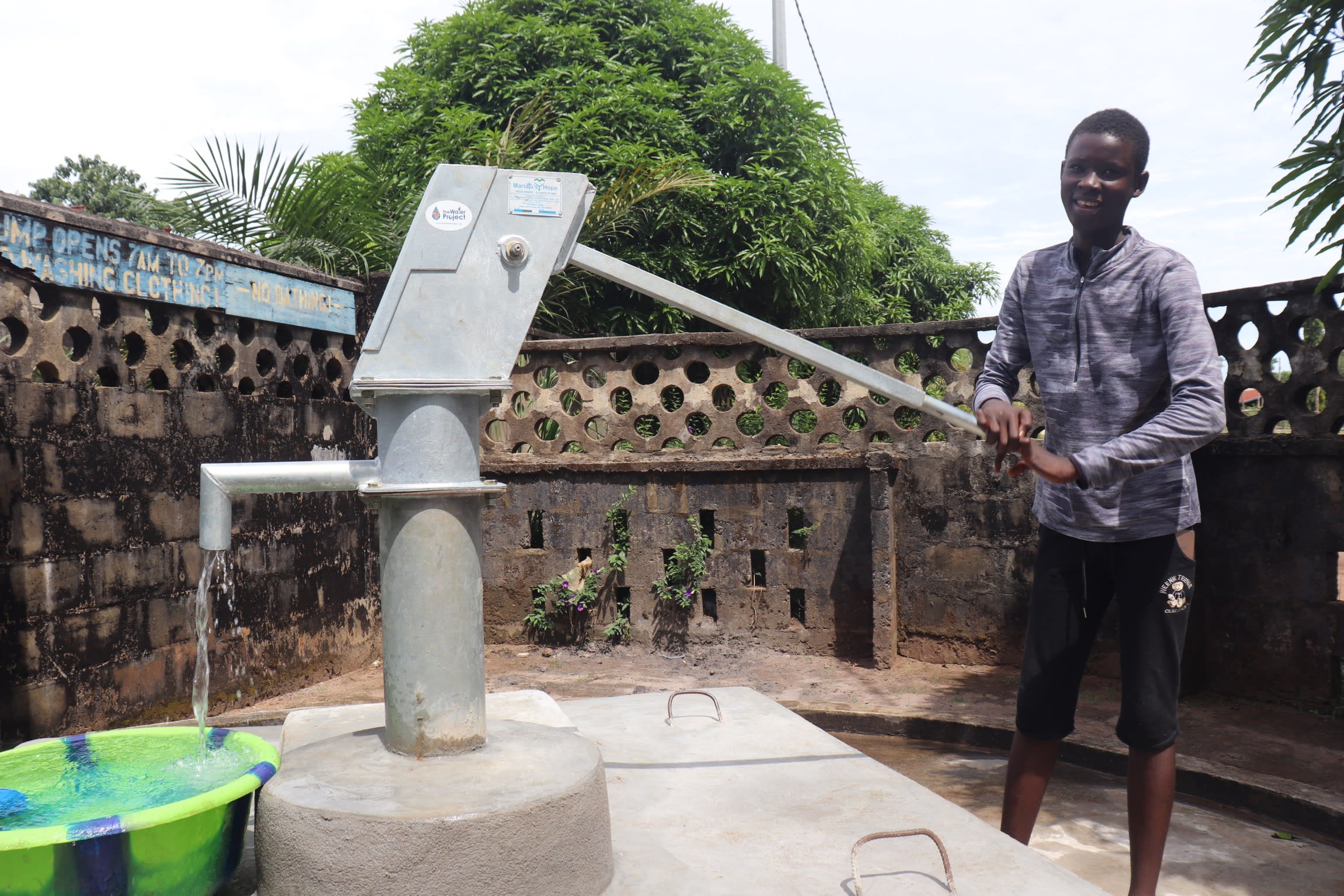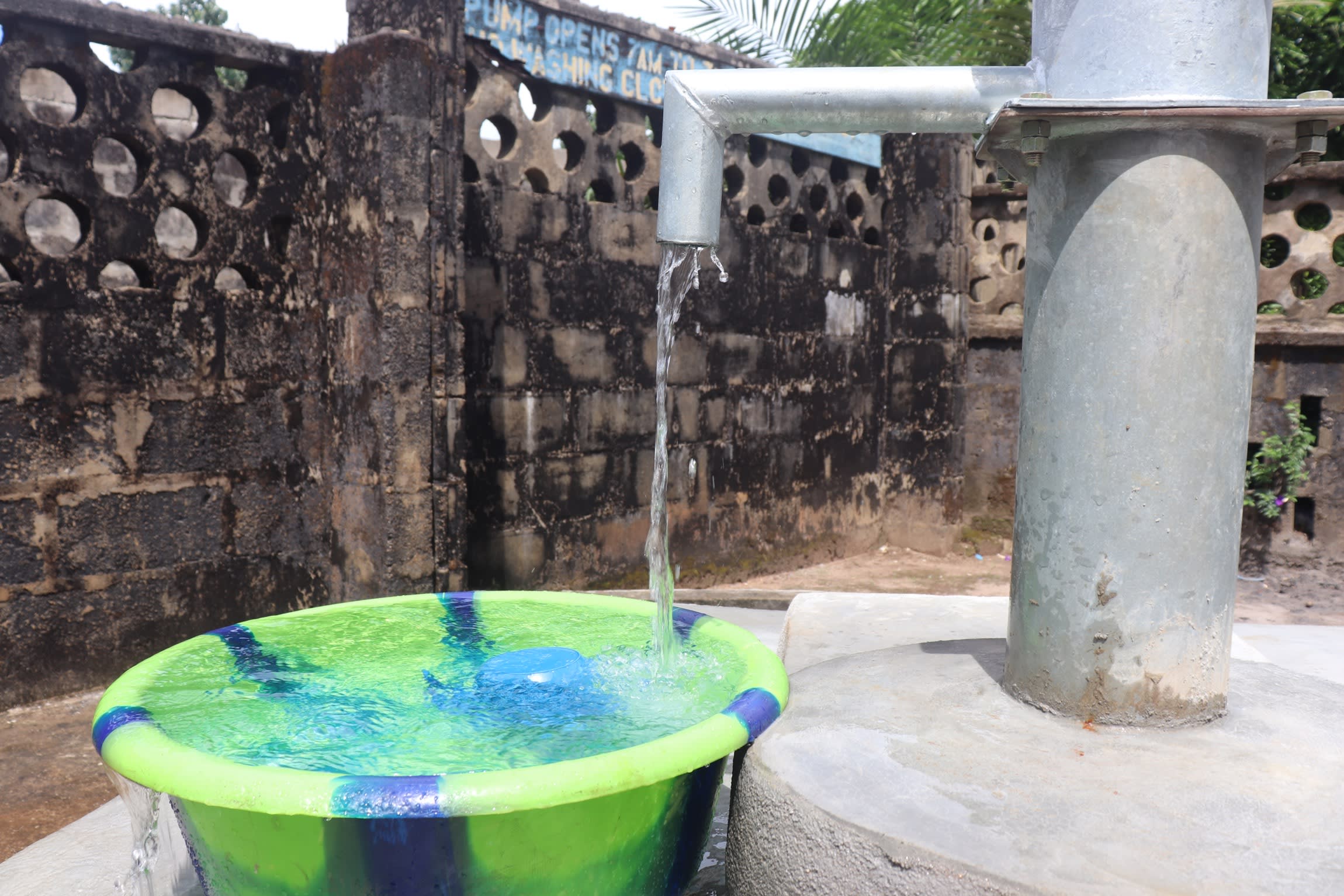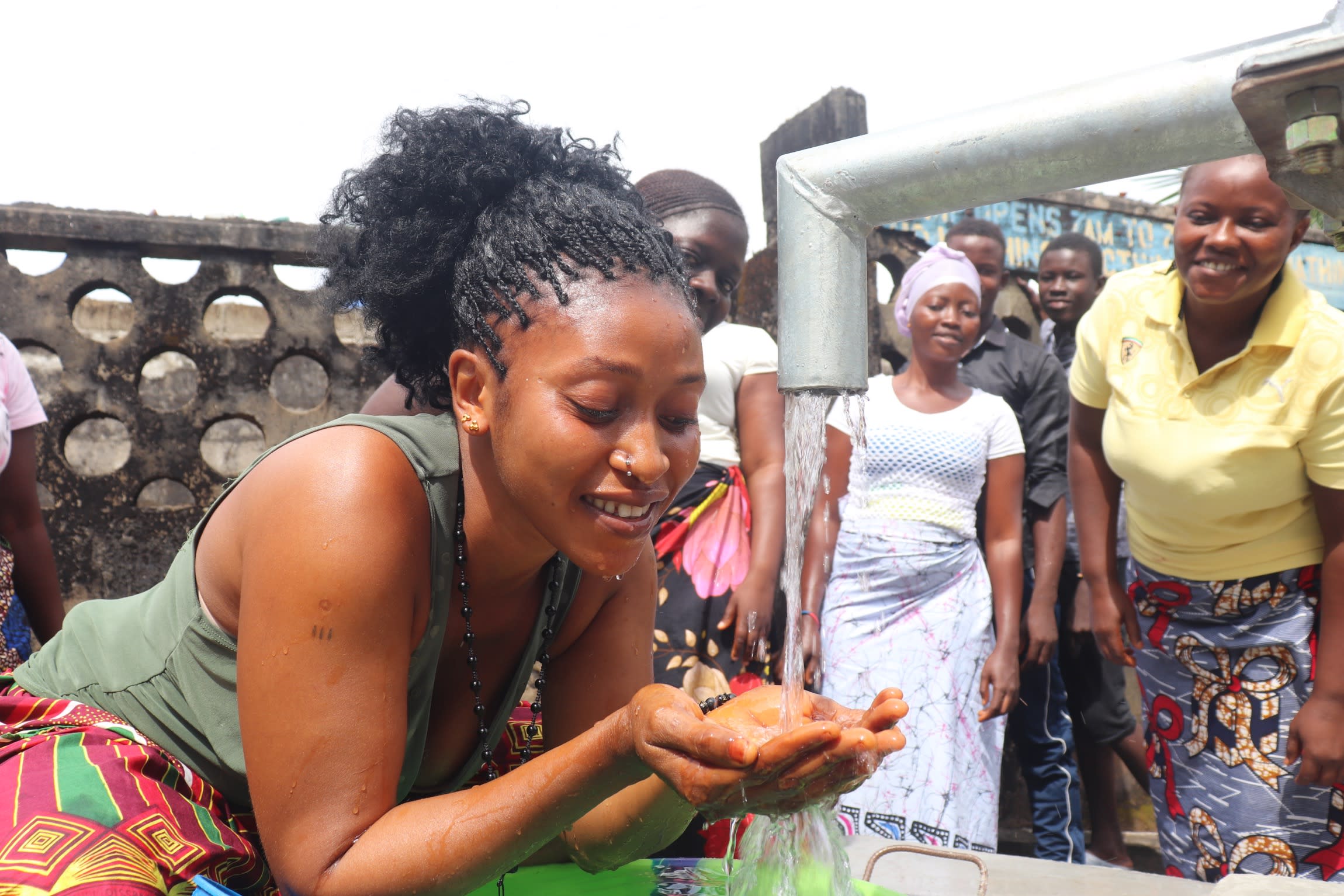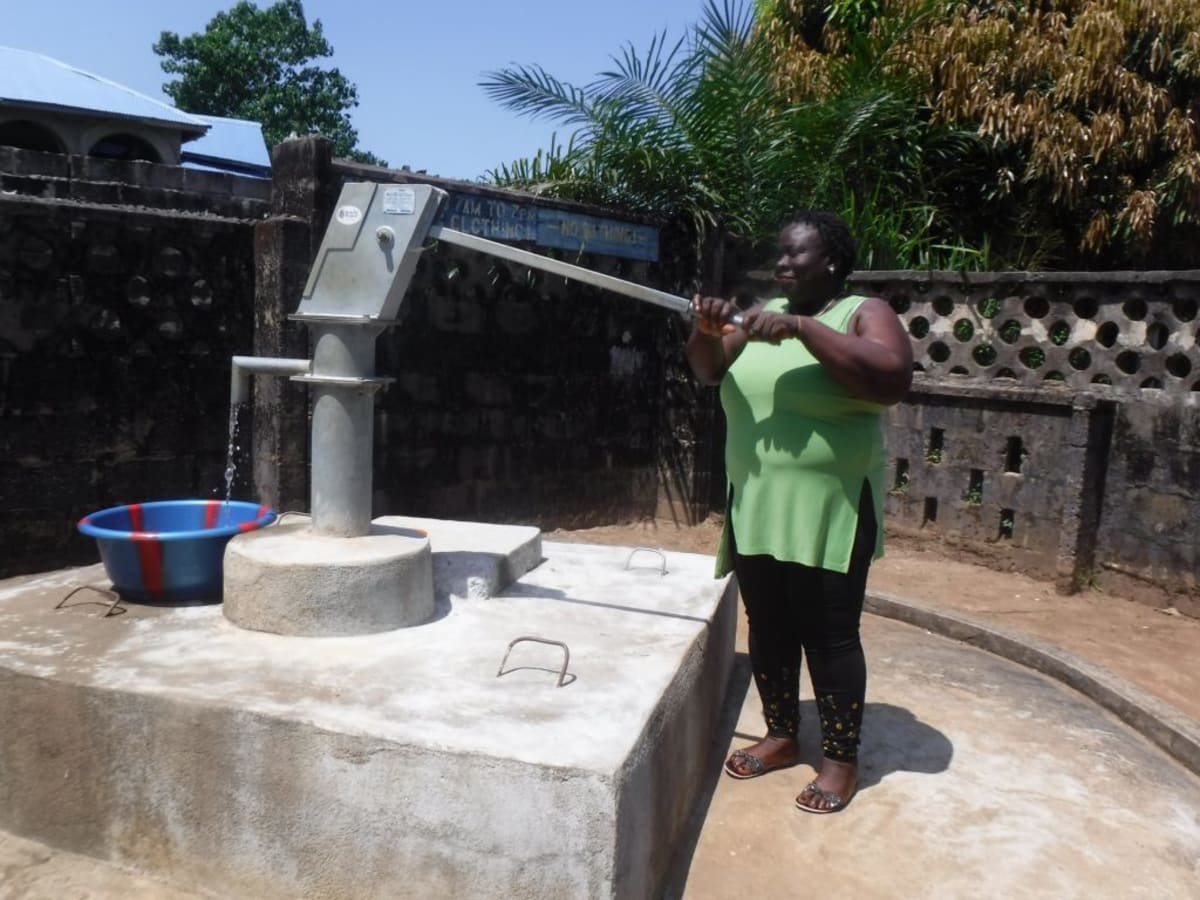For the last couple of years, the 150 community members of Tintafor have been relying on water from a hand-dug protected well on the property of the Catholic Mission. It is well maintained, easy to access, and within a reasonable walking distance from every house in the community. The only problem is the seasonal low quantity that affects this location during the dry season (February - April) every year when there is not enough water.

The well is never completely dry, but the water table is so low that the number of times during the day the well is closed has increased so it can recharge. The proposed solution, converting the hand-dug well into a borehole well, will provide more water, ensuring the community has enough to meet their needs all year round.
Lauretta Thompson, 46, the community Infant and Nutrition Coordinator and member of the water committee, commented, "This water well has served this community for quite some time, with no reported main problems. Until recently when the water table started to drop, which caused the committee to increase the closing times. The frequent closing times will help the well to recharge and serve the people for a limited time only. There is more demand for water, and the more the demand, the more water points break down."
When the current well is not producing enough water, the people waiting in lines to collect water start earlier than usual and are very long. Other activities like work, school, and domestic duties have to be put on hold or neglected altogether. Because of the limited supply, water also has to be rationed so every community member can collect some.

Aminata K., a 16-year-old student, shared, "I come from a family where I am the eldest child, and the chores are all on my shoulders. I am responsible for sweeping, doing laundry, fetching water, and helping my mother to cook. The only time we suffer for water is during the months of February, March, and April [the dry season]."
Frustration levels continue to increase, and people are making their way to other communities for water, which steals their time and energy. The burden on surrounding communities of additional people collecting water is also becoming too much, leading to arguments.
Converting this well to a borehole will help give community members back their time to focus on other things during the day and hopefully maintain peaceful relationships with one another and the surrounding communities.
Well Rehabilitation
The well marked for rehabilitation is the most-used source in the community. It is properly cared for, but since it is hand-dug, it is beginning to experience issues like lack of adequate supply. By converting it to a borehole, the well will provide water for years to come. Our team will remove the pump, and a hand auger will be lowered inside and powered by a drill team. This hand auger will allow the team to drill several meters deeper to hit a sufficient water column to ensure the well supplies water throughout all seasons.
As the team drills, the casing will be installed, transforming the bottom of this hand-dug well into a borehole. PVC piping will connect this lower system directly to the pump, which we know will also improve water quality.
Once this plan is implemented, everyone within the community will have access to safe drinking water in both quality and quantity, even through the dry months.
Hygiene and Sanitation Training
We will offer hygiene and sanitation training sessions for three days in a row.
After our visit, the hygiene and sanitation trainer decided it would be best to teach community members how to build a tippy tap (a hand-washing station built with a jerrycan, string, and sticks). They will use these tippy taps for handwashing demonstrations and teach other tools like dish racks and the importance of properly penning in animals.
This training will also strengthen the water user committee that manages and maintains this well. They enforce proper behavior and report to us whenever they need help solving a serious problem, like a pump breakdown.

 Borehole Well and Hand Pump
Borehole Well and Hand Pump































